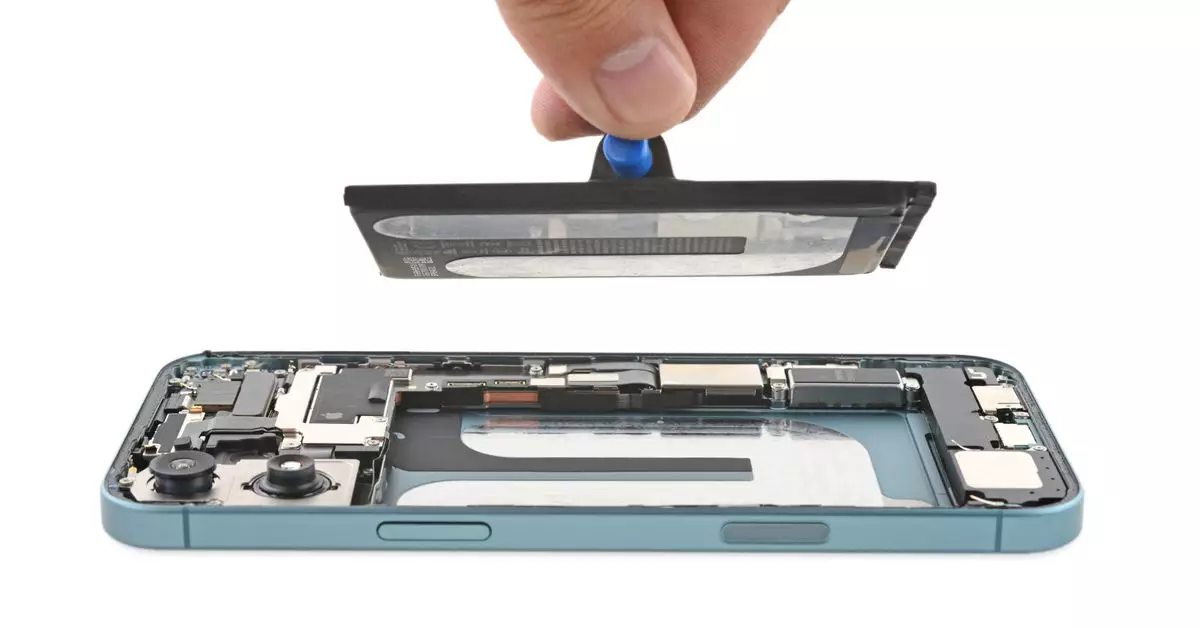The latest iteration of the iPhone, the iPhone 16 series, has spurred a wave of curiosity among tech enthusiasts, particularly regarding its repairability. Apple has made significant strides in reducing the repair frustrations that have previously plagued iPhones, illustrating a commitment to sustainability and user ownership. Notably, the iPhone 16 introduces an electrically debondable adhesive for the battery, a feature that marks a pivotal shift in the landscape of smartphone repairs.
As is customary with new devices, iFixit embarked on disassembling the iPhone 16 to investigate its internal components. The early findings of this disassembly process reveal several notable features, including a tactile Camera control button and an intricate flex cable linked to force measurement. Moreover, Apple’s design incorporates a heat sink engineered to maintain optimal temperatures for the A18 chip’s Neural Engine, particularly during demanding AI tasks. Such design choices not only enhance the device’s performance but also reflect Apple’s ongoing dedication to engineering excellence.
Among the various upgrades, the introduction of the electrically debondable adhesive stands out. Previously, battery replacements typically required professional tools and considerable effort. However, with this new adhesive, Apple appears to have streamlined the process significantly. By simply applying an electric current—available from standard power sources—the adhesive is designed to break its bond swiftly, allowing for easy battery removal. This represents a monumental leap towards user-repairable devices, enabling individuals to perform maintenance on their devices with far less technical expertise.
Reports from iFixit indicate that, under optimal conditions, the newly designed adhesive allows for efficient removal of the battery in a matter of seconds. Utilizing a current of 20 volts, they demonstrated the bond detaching almost effortlessly. Though Apple warns that the effectiveness might decrease over time, the initial performance of this adhesive indicates significant promise. This innovation suggests that Apple may gradually phase out its notorious reputation for producing devices that were difficult to repair, ultimately promoting environmental sustainability through extended device longevity.
The iPhone 16’s advancements in repairability could have profound implications not only for Apple but for the broader smartphone industry. As consumers become more aware of the environmental impacts of electronic waste, a shift towards devices that are easier to repair may inspire competing manufacturers to reevaluate their design philosophies. Moreover, as repairability becomes a significant purchasing factor for consumers, brands may increasingly invest in user-friendly manufacturing practices.
The iPhone 16’s introduction of electrically debondable adhesive exemplifies a meaningful shift towards enhancing repairability within consumer electronics. By simplifying battery replacement, Apple is not just improving user experience but also addressing growing environmental concerns linked to electronic waste. This move, if extended to future devices, could herald a new era in which consumers have greater control over the lifespan of their gadgets, fostering a culture of repair and sustainability in a world increasingly demanding better environmental practices.


Leave a Reply